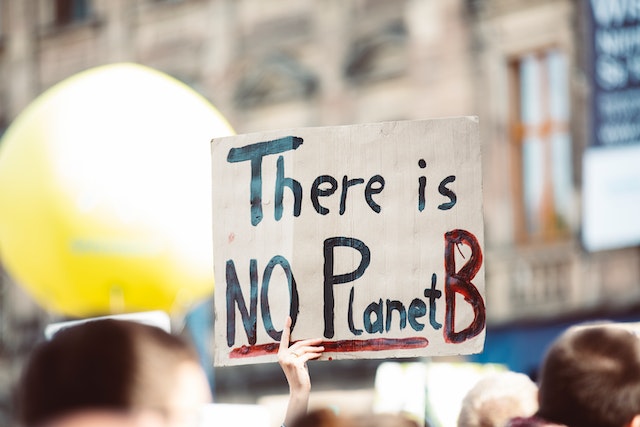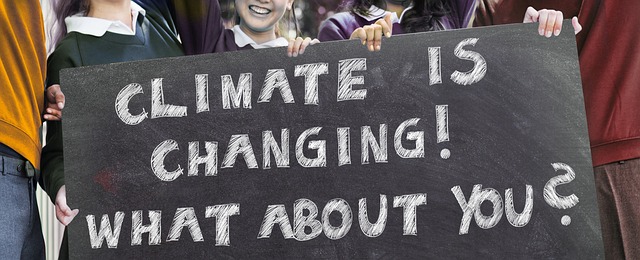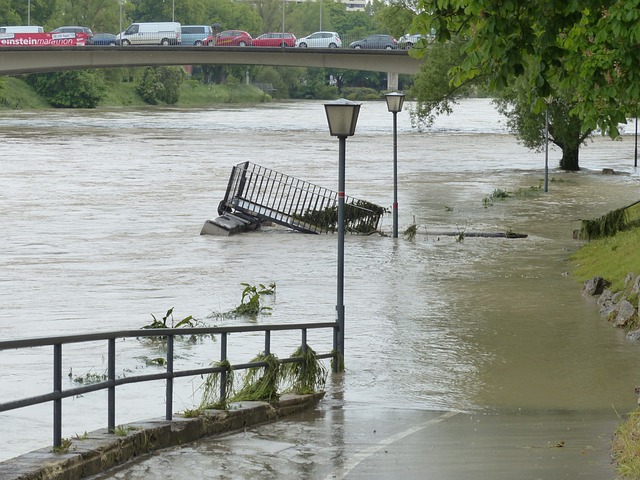Global Warming vs. Climate Change
In the realm of global temperatures, a battle rages on. It’s a clash between two heavyweight contenders: global warming vs. climate change.
The stakes are high, and the consequences couldn’t be more real.
But before we delve into the intricacies of this match, let’s take a moment to acknowledge your feelings on the subject.
It’s understandable if you’re feeling a mix of concern, confusion, and maybe even a touch of skepticism.
After all, when it comes to the Earth’s climate, it’s no easy feat to navigate through the sea of scientific jargon and contradictory opinions.
But fear not, my friend, for we are about to embark on a journey that will shed light on the inconvenient truth of a changing world.
As Ernest Hemingway once said, “The world breaks everyone, and afterward, some are strong at the broken places.”
We, too, shall emerge stronger from the fractures in our understanding of global warming and climate change.
Human activities, from the burning of fossil fuels to deforestation, have unleashed a torrent of nitrous oxide and other greenhouse gas emissions into the earth’s atmosphere.
The consequences? Rising sea levels, heat waves that scorch the land, and extreme weather events that leave devastation in their wake.
The United States, like many other nations, stands at the brink of a pronounced global warming crisis.
In this blog post, we will traverse the pages of scientific literature, decoding the intricacies of the earth’s climate and unraveling the impacts of climate change.
We will confront the skeptical arguments, acknowledging both natural factors and human-caused climate change.
So strap yourself in, my friend, for we are about to embark on a journey through the changing climate.
Armed with knowledge and a determination to face the inconvenient truths head-on.
Conventional Approaches to Addressing Global Warming and Climate Change

The conventional approaches commonly employed
When it comes to tackling the monumental challenge of global warming and climate change, humanity has turned to a set of conventional approaches.
These approaches, while well-intentioned, have often fallen short of achieving the necessary impact. Let’s explore these strategies that have been widely employed.
International agreements and policies
Global cooperation and collaboration have been sought through international agreements and policies.
The most notable among them is the Paris Agreement.
Where countries around the world pledged to limit global temperature rise to well below 2 degrees Celsius above pre-industrial levels.
These agreements serve as a framework for nations to address climate change collectively.
Transitioning to renewable energy sources
Recognizing the role of human activities in driving climate change, transitioning from fossil fuels to renewable energy sources has been a crucial focus.
The aim is to reduce greenhouse gas emissions by harnessing solar, wind, hydro, and other forms of clean energy.
This shift is intended to curb the reliance on fossil fuels and mitigate the greenhouse effect that traps heat in the Earth’s atmosphere.
Carbon offsetting and emissions reduction targets
Carbon offsetting initiatives and emissions reduction targets have gained prominence as means to mitigate climate change.
Plus, Carbon offsetting involves compensating for greenhouse gas emissions by investing in projects that reduce emissions elsewhere.
Emissions reduction targets set specific goals for countries, industries, and individuals.
To limit their carbon footprint and contribute to the global effort of combating climate change.
The limitations and challenges of these conventional approaches

While these conventional approaches have been adopted with good intentions, they have faced significant limitations and challenges that hinder their effectiveness.
Slow progress and lack of global consensus
Despite international agreements and policies, progress in implementing effective measures has been slow.
The complexities of negotiating agreements among diverse nations with varied priorities, economies, and political landscapes often lead to a lack of consensus and delays in taking necessary actions.
This sluggishness impedes the urgent response required to address climate change.
Economic and political obstacles
Transitioning to renewable energy sources and implementing climate change policies face economic and political obstacles.
Economic considerations, such as the cost of renewable technologies and the transition away from established industries, can hinder the pace of change.
Additionally, political dynamics and competing priorities among nations can delay or dilute policy implementations.
Resulting in inadequate actions to combat climate change.
Inadequate implementation and enforcement mechanisms
While the goals of carbon offsetting and emissions reduction targets are admirable.
Their effectiveness relies heavily on robust implementation and enforcement mechanisms.
Monitoring and verifying emissions reductions, ensuring integrity in carbon offset projects, and holding entities accountable for their commitments pose significant challenges.
Without stringent mechanisms in place, these approaches may fall short in delivering the desired results.
The limitations and challenges faced by these conventional approaches highlight the need for a more comprehensive and effective strategy to tackle the complexities of global warming and climate change.
In the next section, we will explore a new method that embraces a holistic and systemic approach.
Addressing the root causes and striving for transformative change in our response to the changing climate.
The New Method: Holistic and Systemic Approach
Introduce the new method as a more comprehensive and effective way to address global warming and climate change
In the face of the immense challenges posed by global warming and climate change, a new method has emerged.
An approach that embraces the complexity of the issue and recognizes the interconnectedness of various factors.
This method goes beyond the limitations of conventional approaches, offering a more comprehensive and effective strategy to address the realities of a changing world.
By adopting a holistic and systemic approach, we can navigate the complexities of climate change and pave the way for a sustainable future.
Key elements of the new method

Systems thinking and interconnectedness
The new method emphasizes systems thinking, understanding that the Earth’s climate is a complex web of interrelated systems.
It acknowledges that climate change is not a standalone issue but rather a result of intricate interactions between the atmosphere, oceans, land, and human activities.
By embracing this interconnectedness, we can gain a deeper understanding of the underlying mechanisms and drivers of climate change.
Integration of social, economic, and environmental aspects
Recognizing that climate change is not just an environmental problem, the new method integrates social, economic, and environmental aspects into its approach.
It acknowledges that addressing climate change requires addressing socioeconomic inequalities, promoting sustainable development, and fostering social resilience.
By considering the broader implications and engaging diverse stakeholders, including marginalized communities, businesses, and governments.
This approach aims to create a more inclusive and equitable response to climate change.
Collaboration and inclusivity across sectors and stakeholders
The new method places great importance on collaboration and inclusivity across sectors and stakeholders.
It acknowledges that no single entity or sector can tackle the complexities of climate change alone.
By fostering partnerships, knowledge sharing, and collective action.
This approach harnesses the power of collaboration to leverage diverse perspectives, expertise, and resources.
Governments, businesses, civil society organizations, academia, and local communities must come together to drive transformative change and shape a sustainable future.
Logical arguments supporting the superiority of the new method
Addressing root causes and underlying systemic issues
Unlike conventional approaches that often focus on treating the symptoms of climate change.
The new method digs deeper and addresses the root causes and underlying systemic issues.
It recognizes that to create lasting change, we must tackle the drivers of climate change.
Such as greenhouse gas emissions from human activities, deforestation, and unsustainable land use.
By addressing these fundamental issues, we can effectively mitigate the impacts of climate change.
Promoting resilience and adaptation strategies

The new method prioritizes resilience and adaptation strategies in the face of a changing climate. It acknowledges that climate change impacts are already being felt and will continue to intensify.
By integrating adaptation measures into decision-making processes, we can enhance our ability to withstand and bounce back from the challenges posed by a changing climate.
This approach empowers communities and ecosystems to develop strategies that increase their resilience, ensuring their long-term survival and well-being.
Fostering innovation and transformative change
Embracing innovation and transformative change is a cornerstone of the new method.
It recognizes that addressing climate change requires new technologies, sustainable practices, and alternative economic models.
By fostering a culture of innovation and investing in research and development, we can unlock solutions that minimize our carbon footprint, promote energy efficiency, and create a more sustainable future.
This approach encourages transformative change at all levels, from individual actions to systemic shifts in industries and economies.
Emphasizing global equity and justice
The new method recognizes that the impacts of climate change are not evenly distributed, and vulnerable communities often bear the brunt of its consequences.
It emphasizes the importance of global equity and justice, ensuring that the burden of addressing climate change is shared equitably among nations.
And that the most affected communities receive support and resources.
This approach acknowledges historical responsibilities and the disproportionate contribution of developed nations to greenhouse gas emissions.
By promoting fairness and equity in climate action, we can strive towards a more just and inclusive future.
Encouraging long-term sustainability over short-term fixes
While conventional approaches often focus on short-term fixes and immediate results, the new method emphasizes the importance of long-term sustainability.
It recognizes that climate change is a multi-generational challenge that requires sustained efforts and a forward-looking perspective.
By prioritizing long-term solutions, we can ensure that our actions today do not compromise the well-being of future generations.
This approach promotes responsible decision-making and the consideration of the long-term consequences of our choices.
Through its emphasis on addressing root causes, promoting resilience, fostering innovation, emphasizing equity, and prioritizing long-term sustainability, the new method offers a superior framework for addressing global warming and climate change.
By embracing this holistic and systemic approach, we can transcend the limitations of conventional methods and pave the way for a more sustainable and resilient future.
In the following sections of this article, we will delve deeper into each element of the new method.
Exploring practical strategies, success stories, and the role of individuals, governments, and organizations in driving meaningful change.
By adopting this comprehensive approach and working collectively, we can confront the realities of a changing world and forge a path towards a sustainable future.
Counterarguments and Rebuttals
Present potential counterarguments against the new method
As with any proposed solution, the new method of addressing global warming and climate change is not without its critics.
It is essential to consider and address potential counterarguments to provide a balanced perspective. Let’s explore some common counterarguments that may arise against the new method.
Cost and feasibility concerns
Skeptics may argue that implementing the new method on a large scale would be costly and impractical.
They may contend that transitioning to renewable energy sources, promoting sustainable practices, and fostering global cooperation would require substantial investments and disrupt established economic systems.
They may question the feasibility of such wide-scale changes within a reasonable timeframe.
Resistance to change and vested interests
Another counterargument is the resistance to change and the influence of vested interests.
Critics may assert that powerful industries and entities with a stake in the status quo would impede progress towards adopting the new method.
They may argue that the transition away from fossil fuels and the restructuring of economies could face resistance from those who benefit from the current systems.
Lack of global coordination and cooperation
Some skeptics may point to the challenges of achieving global coordination and cooperation.
They may argue that nations have differing priorities, political dynamics, and economic capacities, making it difficult to achieve consensus and implement effective strategies.
They may question the ability to overcome geopolitical tensions and ensure cooperation among nations for a collective global response.
Logical rebuttals to counterarguments
While these counterarguments may carry some validity.
There are compelling rebuttals to address the concerns and reinforce the superiority of the new method.
Highlight the long-term cost savings and economic benefits
While the upfront costs of transitioning to renewable energy sources and implementing sustainable practices may be significant.
The long-term cost savings and economic benefits outweigh the initial investments.
Studies have shown that renewable energy technologies, such as solar and wind power, have become more cost-effective and competitive with traditional energy sources.
Moreover, investing in a sustainable future can spur innovation, job creation, and economic growth in emerging sectors.
Showcase successful examples of transformative change
Critics may doubt the feasibility of transformative change, but there are numerous success stories that demonstrate the effectiveness of adopting the new method.
Countries like Germany and Denmark have made remarkable progress in transitioning to renewable energy sources.
Reducing greenhouse gas emissions, and creating sustainable infrastructures.
These examples showcase how embracing the new method can lead to tangible results and inspire others to follow suit.
Emphasizing the urgency of collective action and shared responsibility
Addressing global warming and climate change requires collective action and shared responsibility.
While it is true that achieving global coordination can be challenging, the urgency of the issue demands cooperation among nations.
The consequences of inaction far outweigh the complexities of coordination.
By emphasizing the interconnectedness of nations and the shared risks we face, the new method encourages a sense of common purpose and motivates collaborative efforts towards a sustainable future.
It is important to recognize that no solution is without challenges or opposition.
However, the logical rebuttals to the counterarguments demonstrate that the new method offers a superior framework for addressing global warming and climate change.
By highlighting the long-term cost savings, showcasing successful examples, and emphasizing the urgency of collective action, we can address the concerns of skeptics.
And inspire a wider acceptance of this transformative approach.
In the subsequent sections of this article, we will delve deeper into practical strategies, case studies, and the role of individuals, governments, and organizations in implementing the new method.
By addressing the counterarguments and reinforcing the effectiveness of the new approach, we can pave the way for a sustainable and resilient future for generations to come.
Average Global Temperatures
As average global temperatures continue to rise due to human activity, it is evident that the industrial revolution and subsequent changes in the climate system have had a profound impact.
The scientific community, including climate scientists, has extensively studied the causes and consequences of global climate change.
They have identified various factors, such as volcanic eruptions, temperature changes, water vapor, and carbon dioxide emissions, that contribute to the warming of the Earth’s surface.
In recent years and decades, there has been a noticeable increase in extreme weather events, including heatwaves and heavy precipitation, further highlighting the urgency of addressing climate change.
Additionally, the decline of Arctic sea ice and the occurrence of more frequent and intense heatwaves are evidence of the current warming trend.
These changes have far-reaching implications, including the acidification of the oceans, the melting of ice sheets, and the degradation of coral reefs.
To understand the long-term changes in climate, scientists rely on various sources of evidence.
Tree rings, ice cores, and surface temperature records provide insights into the climatic changes over the centuries and even millennia.
By comparing these records to the pre-industrial period, it becomes apparent that the current warming trend is unprecedented.
Atmospheric Carbon Dioxide

One aspect of climate change that has gained significant attention is the role of atmospheric carbon dioxide (CO2) in the greenhouse effect.
As CO2 concentrations increase, they act as a radiative forcing, trapping heat in the Earth’s atmosphere and contributing to the rise in the planet’s average surface temperature.
This rise is typically measured in degrees Fahrenheit or Celsius.
While natural processes, such as volcanic activity, do contribute to climate variability.
The overwhelming evidence points to human-caused climate change as the primary driver of the current warming trend.
The Intergovernmental Panel on Climate Change (IPCC), in its Fifth Assessment Report, expressed high confidence in attributing the observed changes in temperature to human activities.
Understanding the intricate relationship between human activity and climate change is crucial in devising effective solutions.
The need to transition to sustainable energy sources, such as solar energy, and reduce reliance on fossil fuels is paramount.
Furthermore, addressing land use change and curbing carbon dioxide emissions are critical steps toward mitigating the impacts of climate change.
Global climate change is an undeniable reality that necessitates immediate action.
By acknowledging the scientific evidence, engaging in collective efforts, and adopting sustainable practices.
We can work towards mitigating the consequences of climate change and creating a more sustainable future for generations to come.
As Cambridge University Press states, the earth’s average surface temperature is at a tipping point, and our actions today will shape the fate of our planet.
Let us take responsibility and strive for a more resilient and sustainable world.
Global Warming vs. Climate Change Conclusion
In the face of the immense challenges posed by global warming and climate change, the new method of addressing these issues offers a comprehensive and effective approach.
By embracing systems thinking, integrating social, economic, and environmental aspects, and fostering collaboration across sectors and stakeholders.
We can tackle the root causes of climate change and forge a sustainable path forward.
While there may be counterarguments against the new method, such as cost and feasibility concerns, resistance to change, and lack of global coordination.
Logical rebuttals demonstrate that the benefits and urgency of adopting this approach outweigh the challenges.
Highlighting the long-term cost savings, showcasing successful examples, and emphasizing the importance of collective action can address these counterarguments and pave the way for widespread acceptance.
As Ernest Hemingway once said, “The world breaks everyone, and afterward, some are strong at the broken places.”
In the face of a changing climate
In the face of a changing climate, we have the opportunity to emerge stronger armed with knowledge, determination.
And a holistic approach to addressing global warming and climate change.
By acknowledging the realities of a changing world and embracing the new method.
We can create a more sustainable and resilient future for ourselves and future generations.
By empowering ourselves with knowledge, taking collective action, and driving transformative change, we can confront the challenges of climate change and shape a better world.
Together, let us embark on this journey towards a sustainable future.
Where the inconvenient truth of global warming and climate change is faced head-on.
It is in our hands to make a difference and leave a lasting impact on the world we inhabit. The time for action is now.
And by embracing the new method, we can navigate the complexities of climate change and pave the way for a brighter and greener tomorrow.
Remember, as we face the realities of a changing world, we are not alone.
Scientists, policymakers, communities, and individuals around the globe are joining forces in the pursuit of a sustainable future.
Let us join them in this noble endeavor and create a world where the beauty and resilience of our planet can thrive for generations to come.
In the words of Ernest Hemingway, “Now is no time to think of what you do not have. Think of what you can do with what there is.”
Together, we can make a difference and shape the course of our planet’s future.
Let us face the inconvenient truth with courage, determination, and a commitment to a sustainable and resilient world.
Recent Posts
Can Fusion Put Brakes on Climate Change Firstly, in the face of the accelerating climate crisis, the search for sustainable, carbon-free energy sources has never been more urgent. Among the myriad...
The Dangers of Nuclear Energy Firstly, In the pursuit of advancing our energy systems, nuclear energy has emerged as a formidable source. Promising to meet the insatiable demand for power while...


